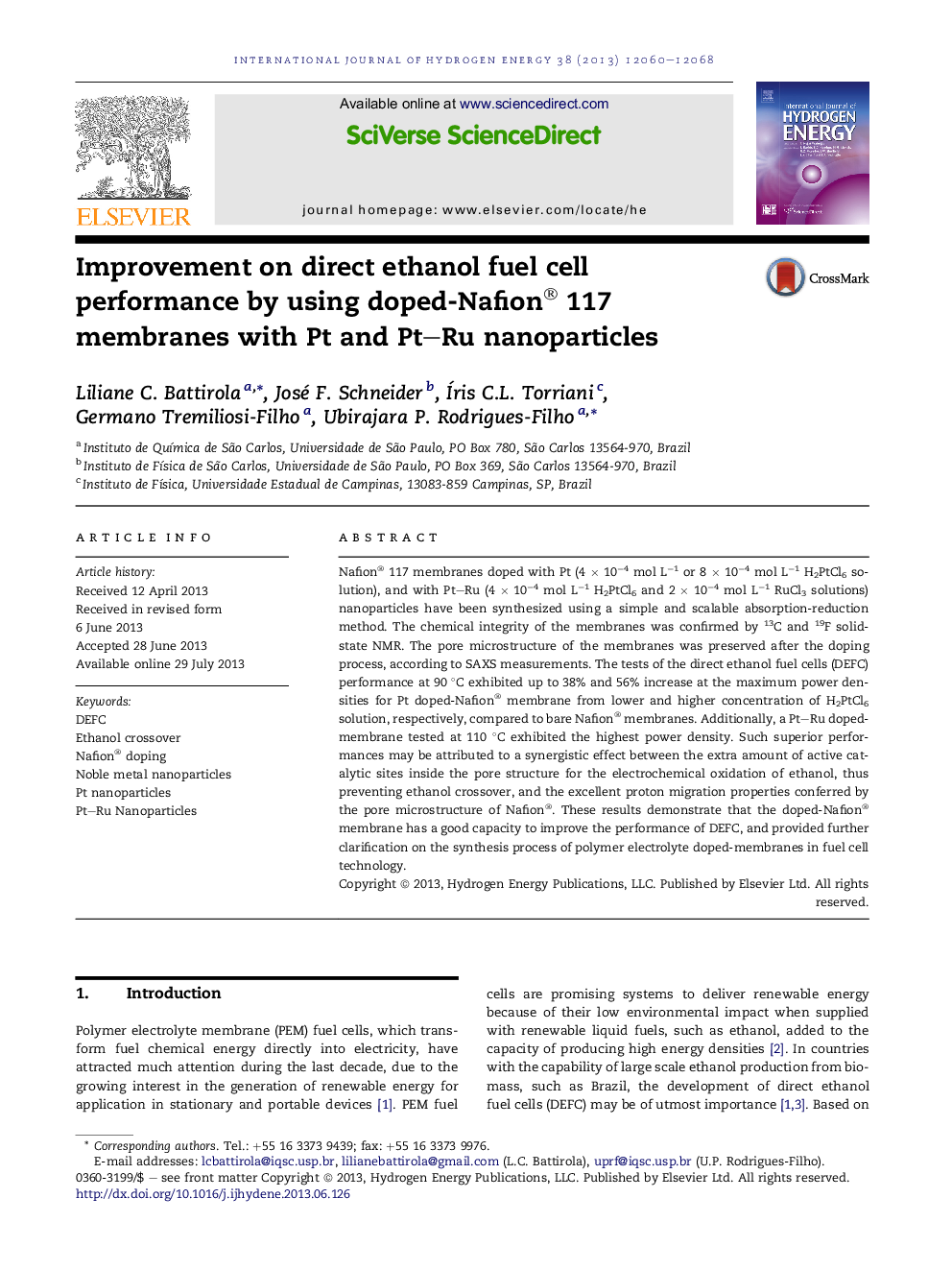| Article ID | Journal | Published Year | Pages | File Type |
|---|---|---|---|---|
| 1274925 | International Journal of Hydrogen Energy | 2013 | 9 Pages |
•Simple protocol for Nafion® doping with Pt and Pt–Ru nanoparticles.•Proved by NMR and SAXS the chemical and morphological preservation of the Nafion®.•Decreasing of ethanol crossover in the DEFC.•Pore doping of Nafion® with Pt–Ru is an efficient methodology to reduce crossover.
Nafion® 117 membranes doped with Pt (4 × 10−4 mol L−1 or 8 × 10−4 mol L−1 H2PtCl6 solution), and with Pt–Ru (4 × 10−4 mol L−1 H2PtCl6 and 2 × 10−4 mol L−1 RuCl3 solutions) nanoparticles have been synthesized using a simple and scalable absorption-reduction method. The chemical integrity of the membranes was confirmed by 13C and 19F solid-state NMR. The pore microstructure of the membranes was preserved after the doping process, according to SAXS measurements. The tests of the direct ethanol fuel cells (DEFC) performance at 90 °C exhibited up to 38% and 56% increase at the maximum power densities for Pt doped-Nafion® membrane from lower and higher concentration of H2PtCl6 solution, respectively, compared to bare Nafion® membranes. Additionally, a Pt–Ru doped-membrane tested at 110 °C exhibited the highest power density. Such superior performances may be attributed to a synergistic effect between the extra amount of active catalytic sites inside the pore structure for the electrochemical oxidation of ethanol, thus preventing ethanol crossover, and the excellent proton migration properties conferred by the pore microstructure of Nafion®. These results demonstrate that the doped-Nafion® membrane has a good capacity to improve the performance of DEFC, and provided further clarification on the synthesis process of polymer electrolyte doped-membranes in fuel cell technology.
